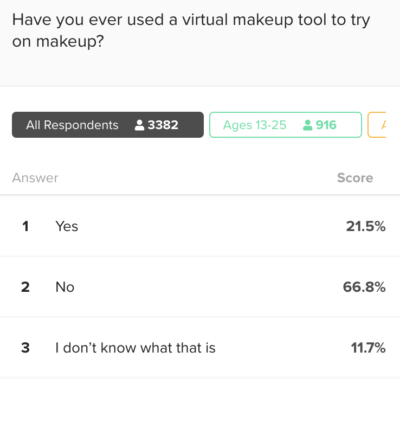Along with most industries, the beauty industry is continuously adapting when it comes to the retail revolution that is online shopping. Makeup companies are well aware that consumers are visiting physical stores less often, choosing instead brands such as Glossier and Colourpop who’ve built their empires entirely online. In order to optimize and drive online paths to purchase, many beauty brands have heavily invested in virtual and augmented reality technology and apps, even as privacy concerns mount.
Our beauty survey determined that the number one reason why consumers do not buy makeup products online is their inability to see the shades of makeup in person. Virtual makeup apps eliminate this barrier by superimposing beauty products like lipstick shades onto a camera selfie of a consumer. Given the popularity of purchasing beauty products online and the steep investment made by companies such as Sephora and L’Oreal to optimize the online buying experience, we set out to determine how many consumers have actually used VR and AR technology within the beauty realm.


Click the image above to access our live interactive dashboard with the full results of our beauty survey, including reasons why younger versus older consumers prefer to purchase makeup products in-store.
According to our study of 3,382 US women, 22.2% have used a virtual makeup tool to try on makeup. Unsurprisingly, younger consumers were more likely to have used a virtual makeup tool (30% of consumers ages 13-25). Among consumers who have used a virtual makeup tool, Sephora and YouCam had the highest usage, with the latter much more popular among 13-25 year olds. We’ve previously seen that age is a huge influence on which beauty brands consumers tend to choose, and this seems to be the case for beauty apps as well.

